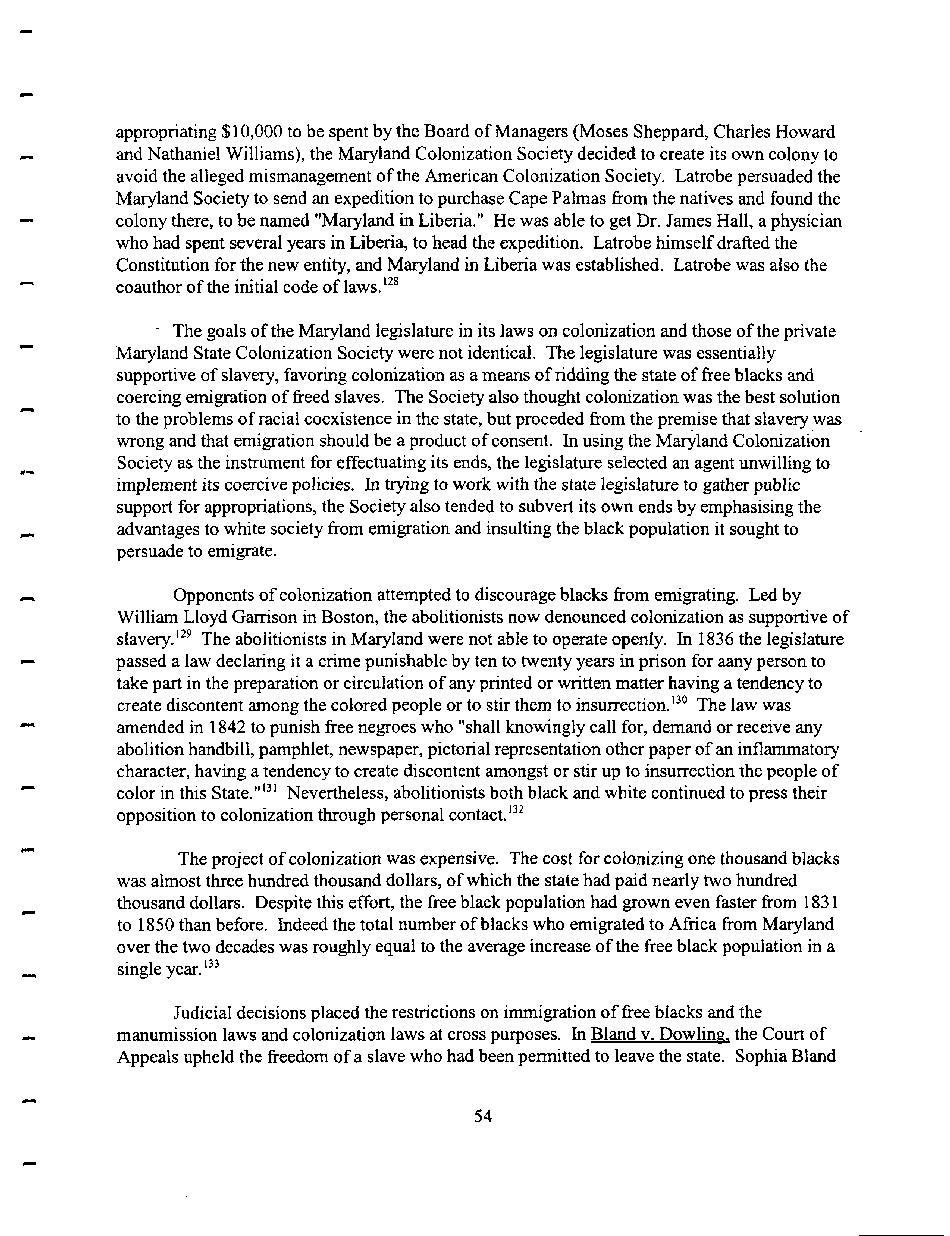|
appropriating $10,000 to be spent by the Board of Managers (Moses Sheppard, Charles Howard
and Nathaniel Williams), the Maryland Colonization Society decided to create its own colony to
avoid the alleged mismanagement of the American Colonization Society. Latrobe persuaded the
Maryland Society to send an expedition to purchase Cape Palmas from the natives and found the
colony there, to be named "Maryland in Liberia." He was able to get Dr. James Hall, a physician
who had spent several years in Liberia, to head the expedition. Latrobe himself drafted the
Constitution for the new entity, and Maryland in Liberia was established. Latrobe was also the
coauthor of the initial code of laws.128
The goals of the Maryland legislature in its laws on colonization and those of the private
Maryland State Colonization Society were not identical. The legislature was essentially
supportive of slavery, favoring colonization as a means of ridding the state of free blacks and
coercing emigration of freed slaves. The Society also thought colonization was the best solution
to the problems of racial coexistence in the state, but preceded from the premise that slavery was
wrong and that emigration should be a product of consent. In using the Maryland Colonization
Society as the instrument for effectuating its ends, the legislature selected an agent unwilling to
implement its coercive policies. In trying to work with the state legislature to gather public
support for appropriations, the Society also tended to subvert its own ends by emphasising the
advantages to white society from emigration and insulting the black population it sought to
persuade to emigrate.
Opponents of colonization attempted to discourage blacks from emigrating. Led by
William Lloyd Garrison in Boston, the abolitionists now denounced colonization as supportive of
slavery.129 The abolitionists in Maryland were not able to operate openly. In 1836 the legislature
passed a law declaring it a crime punishable by ten to twenty years in prison for aany person to
take part in the preparation or circulation of any printed or written matter having a tendency to
create discontent among the colored people or to stir them to insurrection.130 The law was
amended in 1842 to punish free negroes who "shall knowingly call for, demand or receive any
abolition handbill, pamphlet, newspaper, pictorial representation other paper of an inflammatory
character, having a tendency to create discontent amongst or stir up to insurrection the people of
color in this State."131 Nevertheless, abolitionists both black and white continued to press their
opposition to colonization through personal contact.132
The project of colonization was expensive. The cost for colonizing one thousand blacks
was almost three hundred thousand dollars, of which the state had paid nearly two hundred
thousand dollars. Despite this effort, the free black population had grown even faster from 1831
to 1850 than before. Indeed the total number of blacks who emigrated to Africa from Maryland
over the two decades was roughly equal to the average increase of the free black population in a
single year.133
Judicial decisions placed the restrictions on immigration of free blacks and the
manumission laws and colonization laws at cross purposes. In Bland v. Dowling. the Court of
Appeals upheld the freedom of a slave who had been permitted to leave the state. Sophia Bland
54
�
|

